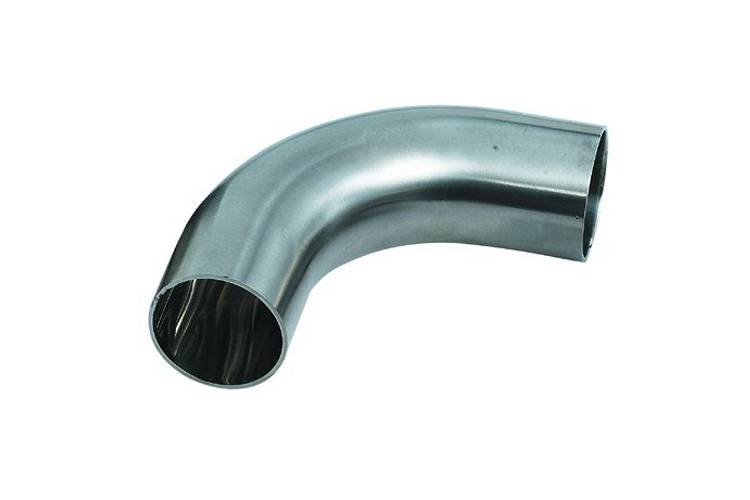In the intricate world of industrial piping, every component plays a critical role in ensuring the efficiency, safety, and longevity of the system. Among the most fundamental of these components is the pipe elbow, a fitting designed to change the direction of flow. However, not all elbows are created equal. The choice between a Long Radius (LR) elbow and a Short Radius (SR) elbow can have significant implications for a piping system’s performance.
For project managers, engineers, and designers, a clear understanding of the distinctions between these two types of elbows is paramount. This knowledge ensures that the right component is selected for the right application, optimizing flow and maintaining system integrity.
The Core Difference: It’s All in the Radius
The primary and most defining difference between an LR and an SR elbow lies in the radius of the bend. This is the distance from the center of the curve to the centerline of the pipe.
- Long Radius (LR) Elbow: An LR elbow has a bend radius that is 1.5 times the Nominal Pipe Size (NPS) of the pipe. This can be represented by the formula: , where ‘R’ is the bend radius and ‘D’ is the nominal pipe diameter. This longer radius results in a more gradual, sweeping turn.
- Short Radius (SR) Elbow: An SR elbow, in contrast, has a bend radius that is equal to the Nominal Pipe Size of the pipe. The formula for this is: . This creates a much sharper, more compact turn.
This fundamental geometrical difference is the source of all the performance variations between the two types of elbows.
Impact on Flow, Pressure, and Performance
The radius of the bend directly influences the fluid dynamics within the pipe. The choice between an LR and an SR elbow can significantly affect pressure drop, flow rate, and potential for erosion.
The Case for the Long Radius (LR) Elbow
The gentler, more gradual turn of an LR Elbow offers several distinct advantages in terms of fluid dynamics. The smoother path for the fluid results in:
- Lower Pressure Drop: As the fluid navigates the bend, it experiences less resistance in an LR elbow. This translates to a lower pressure drop across the fitting, which is crucial in long pipelines where cumulative pressure loss can impact efficiency and increase pumping costs.
- Reduced Turbulence: The gradual change in direction minimizes turbulence in the fluid flow. This is particularly important when transporting fluids that are sensitive to agitation or when a consistent flow profile is necessary for downstream equipment.
- Minimized Erosion: In systems transporting abrasive fluids or slurries, the reduced turbulence and lower velocity at the outer wall of the elbow mean less wear and tear. This extends the service life of the fitting and the overall piping system.
When to Use a Short Radius (SR) Elbow
Despite the hydraulic advantages of the LR elbow, the SR elbow has its own specific and important applications. Its primary benefit is its compact size. The sharper turn allows for piping to be installed in tight spaces where an LR elbow simply would not fit. This makes SR elbows invaluable in:
- Confined Spaces: In applications like skid-mounted systems, shipbuilding, and complex processing plants with limited real estate, the compact nature of an SR elbow is a significant design advantage.
- Less Critical Flow Applications: In systems where a slight increase in pressure drop is not a major concern and the fluid is non-abrasive, the cost and space savings of an SR elbow can make it the more practical choice.
A Quick Comparison: LR vs. SR Elbow
Material and Construction
Both LR and SR elbows are available in a wide range of materials to suit various industrial applications. Common materials include:
- Carbon Steel: For its strength and durability in high-pressure and high-temperature applications.
- Stainless Steel: For its corrosion resistance in chemical processing, food and beverage, and pharmaceutical industries.
- Alloy Steels: For specialized applications involving extreme temperatures or corrosive substances.
The manufacturing process for both types of elbows is typically governed by standards such as ASME B16.9, which ensures dimensional consistency and quality.
Making the Right Choice for Your Application
Ultimately, the decision to use an LR or SR elbow comes down to a careful consideration of the specific requirements of the piping system. If the priority is to maintain a smooth flow, minimize pressure drop, and handle high-velocity or abrasive fluids, the LR elbow is the superior choice. However, if space is at a premium and a slight compromise in hydraulic efficiency is acceptable, the SR elbow provides a practical and cost-effective solution.
Understanding these key differences allows for the design of more efficient, reliable, and well-optimized piping systems across a multitude of industries.
To source a comprehensive range of high-quality pipe fittings for your specific needs, you can contact Rajveer Stainless and Alloys.



